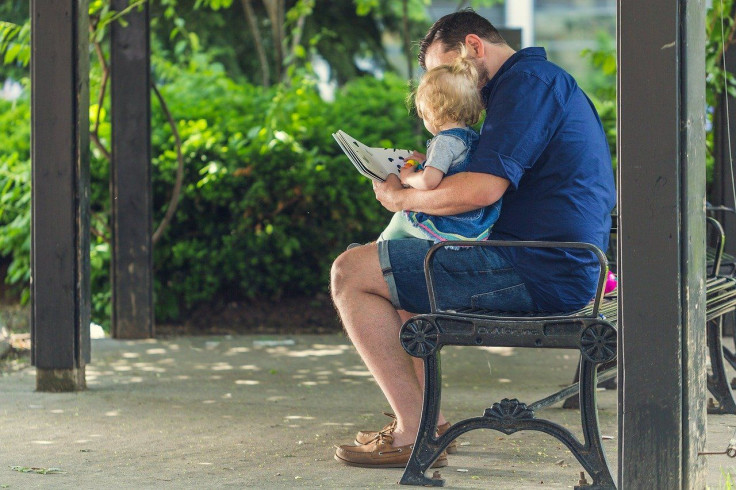Paper Book Or E-Book? Toddlers Respond To Parents Less When Reading From Tablets
KEY POINTS
- Researchers looked at 72 parent-toddler pairs
- They read nursery rhymes in print and from apps
- Toddlers interacted with their parents more when print books were involved
Can the type of books that parents use to read to their toddlers affect their interaction? Physical books may yield more verbal interactions than e-books on tablets, a new study has found.
Digital media has had quite a "growing share" of the daily lives of young children, the researchers of a new study, published Wednesday in the journal Pediatrics, noted. In fact, even reading time has shifted to digital media, with many parents using e-books on tablets instead of the traditional paper books.
However, reading to children isn't just about the content of the books, but the experience that parents have with them, HealthDay reported.
"In some studies, parents and toddlers verbalize less when engaging with a tablet versus a print book," the researchers wrote. "More needs to be known regarding child contributions to specific parent verbalizations. We examined parent-toddler contingent interactions with tablet applications versus print books, as well as moderators of these associations."
For their study, the researchers recruited 72 parent-toddler pairs from the University of Michigan online research registry, social media and community settings. The children had to be between 24 and 36 months of age and shouldn't have a developmental delay or serious medical condition. The parents had to be capable of reading English sufficiently.
In the sessions conducted from November 2018 to May 2019, researchers had a closer look at the interactions between the parents and their children as they read nursery rhymes, either from a book in print or from an app on a tablet.
"We chose nursery rhyme apps because they naturally elicit turn-taking (eg, a child completing a stanza the parent started) and gesturing compared with other toddler-directed apps," the researchers noted.
They found that toddlers were more likely to interact with their parents when they were reading from a book compared to a tablet. The "unruly" children who were prone to emotional outbursts were also found to be more responsive to their parents when reading from print, HealthDay noted.
On part of the parents, they also talked more when they were reading from a book, but talked less and asked fewer questions when using a tablet.
"Not only were parent verbalizations toward toddlers less frequent in the tablet conditions but also a majority of these verbalizations were ignored by toddlers and to a more substantial degree when using tablets compared with a print book," the researchers wrote.
Dr. Dipesh Navsaria of the University of Wisconsin-Madison, who was not involved in the study, surmised that the interactive features of the apps may be distracting the child in a way that print books don't, HealthDay noted. This then distracts from "the most important thing about reading," which is the "shared experience" between the parent and the child.
Dr. Brandi Freeman of Children's Hospital Colorado, who was also not involved in the study, further noted that such interactive features possibly lessen the parents' likelihood to talk since the e-books are already "doing most of that work for them," according to HealthDay.
That's not saying that tablets are bad, however, as Navsaria noted situations in which books on tablets may come in handy, such as when the family is travelling and it's easier to carry the tablet rather than several books. However, Navsaria recommended opting for e-books that are rather like traditional paper books, with less interactive features.
"Tablets and mobile devices are prominent fixtures in modern family life, and app design features can impede children's responses despite parent's efforts to engage their children in developmentally enriching conversation," the researchers wrote.
They recommend software designers to consider "limiting extraneous enhancements," and pediatric providers to continue recommending co-viewing and instructive practices such as asking the children open-ended questions.

© Copyright IBTimes 2025. All rights reserved.






















